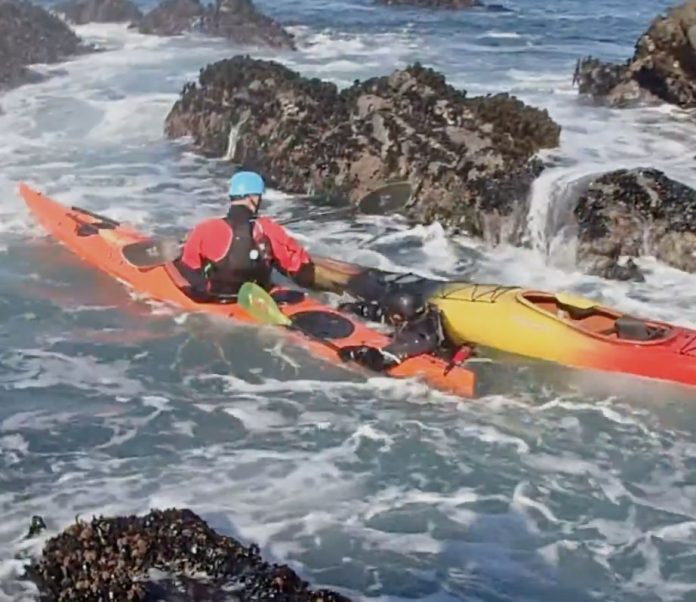It’s always fun to play around in kayaks, jump into the water and try various ways of doing things. While doing so, we learned that adding a contact tow to the back-deck carry is a fast, stable and effective method for a single rescuer to remove both boat and swimmer from a hazardous location.
This version of the back-deck carry can make a paddler feel more comfortable both when the swimmer is climbing on and while underway. With the extra stability provided by the swimmer’s kayak, the paddler can focus on a more effective forward stroke with less need for bracing to stay upright. Also, since the swimmer is more stable, they can raise their feet higher out of the water causing less drag. Once reaching an area where the team feels comfortable doing a T-rescue, the swimmer can stay out of the water while the T is performed, returning to a dry boat without getting in the water again.
This rescue adds stability to a back-deck carry, but is not a replacement. The standard carry should be practiced before adding this variation. Practicing the standard rescue will ensure that if the swimmer’s boat is lost or not available the rescue can continue without delay.
As with performing other rescues, and paddling in dynamic water in general, proper form must be used to prevent injury. For this rescue to work efficiently, prior practice is required by both the swimmer and rescuer. The swimmer should grab the nearest deck line with their elbow bent and palm facing down, making it easy to let go of the kayak if necessary. Using a straight arm to hold the boat could lead to shoulder injury. Since the swimmer holds the deck line, no ropes or slings are required, which is desirable in dynamic water. The swimmer should hold their paddle with one hand behind the rescuer.
The advantages of this rescue include the need for only one rescuer and a fast and stable way to extract both boat and paddler from a dynamic water situation. I encourage people to spend time experimenting with different things in flat water. Doing this will make you more comfortable paddling in dynamic conditions and will help develop your rescue skills.
Bill Vonnegut is an ACA L5 kayak instructor and a founding member of the Neptune’s Rangers rock gardening crew. You can find Bill paddling the coastal waters of the Pacific Ocean or at Pacific Coastal Kayaking.




